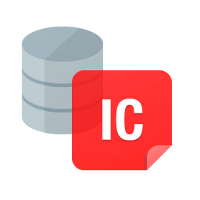ICSviewer 4.5
Mon, Aug 02 2021, 14:27 Calendar, Database, Event, iCal, ICSviewer, Linux, macOS, MySQL, software, Windows, Xojo PermalinkMy ical/ics calendar file viewer and exporter ICS Viewer was updated
v4.4
Bug fixes:
- Some dates from 'DTSTART;VALUE=…' were not processed correctly.
v4.5
Bug fixes:
- The app would crash when exporting a CSV into a non-writeable folder. When this happens, you'll now get an error message.
Comments
ICSviewer 4.3
Wed, Jul 14 2021, 20:39 Calendar, Database, Event, iCal, ICSviewer, Linux, macOS, MySQL, software, Windows, Xojo PermalinkMy ical/ics calendar file viewer and exporter ICS Viewer was updated
v4.3
Bug fixes:
- Some .ics fies seem to lack the time behind the date. That woud crash the app. When no time is present, 12:00:00 is taken as default.
ICSviewer 4.2
Mon, Dec 28 2020, 14:08 Calendar, Database, Event, iCal, ICSviewer, Linux, macOS, MySQL, software, Windows, Xojo Permalink
My ical/ics calendar file viewer and exporter ICS Viewer was updated
v4.2
Bug fixes:
- In rare occasions empty lines are created inside a calendar file. These are now skipped.
My ical/ics calendar file viewer and exporter ICS Viewer was updated
v4.2
Bug fixes:
- In rare occasions empty lines are created inside a calendar file. These are now skipped.
ICSviewer 4.1
Fri, Jul 03 2020, 14:03 Calendar, Database, Event, iCal, ICSviewer, Linux, macOS, MySQL, software, Windows, Xojo Permalink
My ical/ics calendar file viewer and exporter ICS Viewer was updated
v4.1
Bug fixes:
- When the connection to MySQL fails, the error message dialog would leave the sheet window hang without any controls.
My ical/ics calendar file viewer and exporter ICS Viewer was updated
v4.1
Bug fixes:
- When the connection to MySQL fails, the error message dialog would leave the sheet window hang without any controls.
Oracle Instant Client + oci8 for PHP and Apache on macOS Mojave #oracle #oci8 #php #macos
Tue, Mar 24 2020, 11:56 Database, Mac OS X, PHP, programming, Webserver Permalink

I was totally new to using Oracle Instant Client on macOS Mojave, so I had to spend days to figure out and try out on how to get it installed (easy) and how to get the oci8 shared library installed (the hard and most time-consuming part) for use with PHP at both the CLI and in Apache. I have been on many, many websites and read many, many instructions, and I want to thank everyone who put so much effort in clarifying something that actually should be very simple nowadays.
After having read and tried so many tips and tricks, I ended up summarizing what worked for me, which I wrote down on Oracle Instant Client + OCI8 on Macos Mojave for PHP .
ICSviewer 4.0
Fri, Jan 03 2020, 20:45 Calendar, Database, Event, iCal, ICSviewer, Linux, macOS, MySQL, software, Windows, Xojo Permalink
My ical/ics calendar file viewer ICS Viewer is updated to version 4.0
v4.0
Bug fixes:
- When the connection to MySQL fails, field mapping choices cannot be matched and the selected fields are invalid. But they were still visible as being matched and that was misleading.
- An empty message when no fields could be mapped at the time of a MySQL export.
My ical/ics calendar file viewer ICS Viewer is updated to version 4.0
v4.0
Bug fixes:
- When the connection to MySQL fails, field mapping choices cannot be matched and the selected fields are invalid. But they were still visible as being matched and that was misleading.
- An empty message when no fields could be mapped at the time of a MySQL export.
ICSviewer 3.9
Thu, May 16 2019, 15:00 Calendar, Database, Event, iCal, ICSviewer, Linux, macOS, MySQL, software, Windows, Xojo Permalink
My ical/ics calendar file viewer ICS Viewer is updated to version 3.9
v3.9
Bug fixes:
- Fixed a possible hang when choosing a date-range.
My ical/ics calendar file viewer ICS Viewer is updated to version 3.9
v3.9
Bug fixes:
- Fixed a possible hang when choosing a date-range.
ICSviewer 3.8
Fri, Feb 01 2019, 12:14 Calendar, Database, Event, iCal, ICSviewer, Linux, macOS, MySQL, software, Windows, Xojo Permalink
My ical/ics calendar file viewer ICS Viewer is updated to version 3.8
v3.8
Bug fixes:
- 'Last month' preference showed 12 months earlier, when in January of a new year.
My ical/ics calendar file viewer ICS Viewer is updated to version 3.8
v3.8
Bug fixes:
- 'Last month' preference showed 12 months earlier, when in January of a new year.
ICSviewer 3.7
Mon, Sep 03 2018, 23:18 Calendar, Database, Event, iCal, ICSviewer, Linux, macOS, MySQL, software, Windows, Xojo Permalink
My ical/ics calendar file viewer ICS Viewer is updated to version 3.7
v3.7
Bug fixes:
- A hang with the new initial date-range preference setting 'Current month' has been fixed.
- The possibility to use the new initial date-range preference setting has been fixed.
- Various UI improvements in the preferences window.
My ical/ics calendar file viewer ICS Viewer is updated to version 3.7
v3.7
Bug fixes:
- A hang with the new initial date-range preference setting 'Current month' has been fixed.
- The possibility to use the new initial date-range preference setting has been fixed.
- Various UI improvements in the preferences window.
ICSviewer 3.6
Thu, Aug 02 2018, 12:54 Calendar, Database, Event, iCal, ICSviewer, Linux, macOS, MySQL, software, Windows, Xojo Permalink
My ical/ics calendar file viewer ICS Viewer is updated to version 3.6
v3.6
What has changed:
- A new preference where you can set a predefined date range as startup. When you change the preference, the new date range is used immediately, so you do not have to quit & restart ICSviewer.
- When you enter a new date in 'From date' which is newer than the date in 'To date', 'To date' is automatically adjusted to the end of the month of 'From date'. And vice-versa, 'From date' is automatically changed to the first of the month of 'To date' when you pick a 'To date' which is earlier than 'From date'.
- The 'Year'-popup menu in the popup-calendar has been extended from 2039 to 2099.
My ical/ics calendar file viewer ICS Viewer is updated to version 3.6
v3.6
What has changed:
- A new preference where you can set a predefined date range as startup. When you change the preference, the new date range is used immediately, so you do not have to quit & restart ICSviewer.
- When you enter a new date in 'From date' which is newer than the date in 'To date', 'To date' is automatically adjusted to the end of the month of 'From date'. And vice-versa, 'From date' is automatically changed to the first of the month of 'To date' when you pick a 'To date' which is earlier than 'From date'.
- The 'Year'-popup menu in the popup-calendar has been extended from 2039 to 2099.




 Transportation Administration System
Transportation Administration System Snoezelen Pillows for Dementia
Snoezelen Pillows for Dementia Begeleiders voor gehandicapten
Begeleiders voor gehandicapten Laat uw hond het jaarlijkse vuurwerk overwinnen
Laat uw hond het jaarlijkse vuurwerk overwinnen Betuweroute en Kunst
Betuweroute en Kunst Hey Vos! Je eigen naam@vos.net emailadres?
Hey Vos! Je eigen naam@vos.net emailadres? Kunst in huis? Nicole Karrèr maakt echt bijzonder mooie dingen
Kunst in huis? Nicole Karrèr maakt echt bijzonder mooie dingen Kunst in huis? Netty Franssen maakt ook bijzonder mooie dingen
Kunst in huis? Netty Franssen maakt ook bijzonder mooie dingen